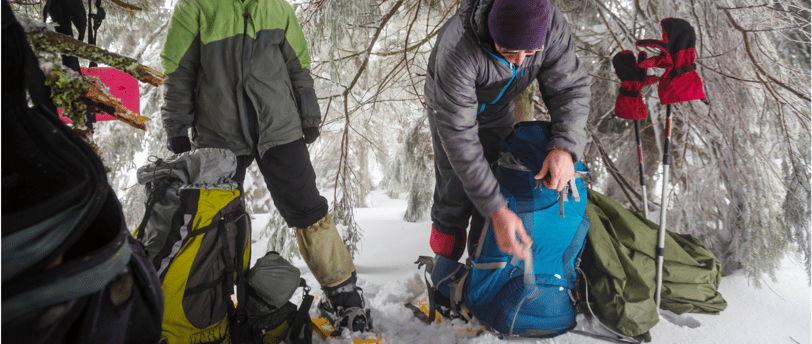Essential Factors to Consider When Purchasing a Winter Hiking Backpack
HIKING & CAMPING GEAR
3/23/20242 min read


Winter hiking offers a unique and exhilarating outdoor experience, but it also requires careful planning and preparation, especially when it comes to selecting the right backpack. A well-designed winter hiking backpack not only keeps your gear organized and accessible but also provides the necessary support and comfort for cold-weather treks. Here are some essential factors to consider when purchasing a winter hiking backpack:
Capacity: The capacity of the backpack is perhaps the most crucial factor to consider. In winter conditions, you'll likely need to carry extra layers, food, water, and safety gear such as a first aid kit and emergency shelter. Look for a backpack with a capacity of at least 40 to 50 liters to accommodate all your essentials comfortably.
Durability: Winter hiking can be tough on gear, with rough terrain, snow, and ice putting extra strain on backpacks. Opt for a backpack made from durable materials such as ripstop nylon or polyester, with reinforced stitching and robust zippers that can withstand the rigors of winter adventures.
Weather Resistance: Winter weather can be unpredictable, with snow, sleet, and rain common occurrences on the trails. Choose a backpack with water-resistant or waterproof materials and features such as sealed seams and water-resistant zippers to keep your gear dry and protected from the elements.
Comfort and Fit: A comfortable backpack is essential for enjoying your winter hikes to the fullest. Look for a backpack with padded shoulder straps, a breathable back panel, and an adjustable hip belt to distribute the weight evenly and reduce pressure points. Many backpacks also come in different sizes or feature adjustable suspension systems to ensure a customized fit for your body.
Accessibility: When hiking in winter conditions, you'll want quick and easy access to your gear, even with gloves on. Look for a backpack with multiple compartments, pockets, and external attachment points for organizing and stashing your gear efficiently. Features such as side or front access zippers and oversized zipper pulls make it easier to access your belongings without having to unpack the entire bag.
Attachment Points: Winter hiking often involves carrying extra gear such as snowshoes, ice axes, or trekking poles. Choose a backpack with dedicated attachment points, straps, or loops for securing these items securely to the outside of the pack, ensuring they're easily accessible when needed.
Safety Features: Safety should always be a top priority when hiking in winter conditions. Look for a backpack with reflective details or attachment points for adding visibility aids such as a safety whistle or strobe light. Some backpacks also feature built-in hydration systems or compatibility with hydration reservoirs, ensuring you stay hydrated even in cold temperatures.
Selecting the right winter hiking backpack is crucial for a safe and enjoyable outdoor adventure. By considering factors such as capacity, durability, weather resistance, comfort and fit, accessibility, attachment points, and safety features, you can find the perfect backpack to suit your needs and take your winter hikes to the next level of comfort and convenience.

